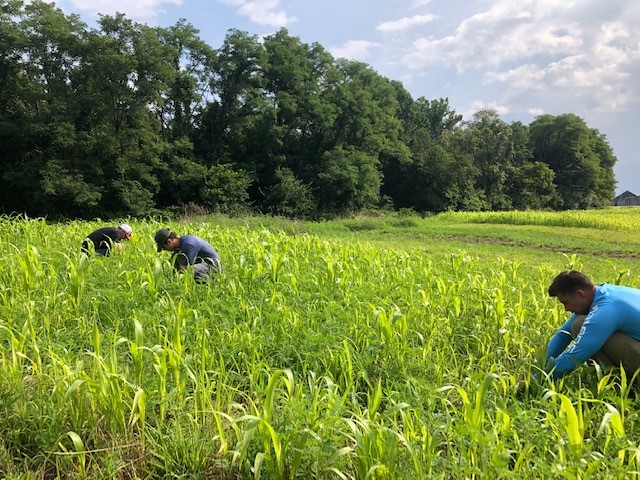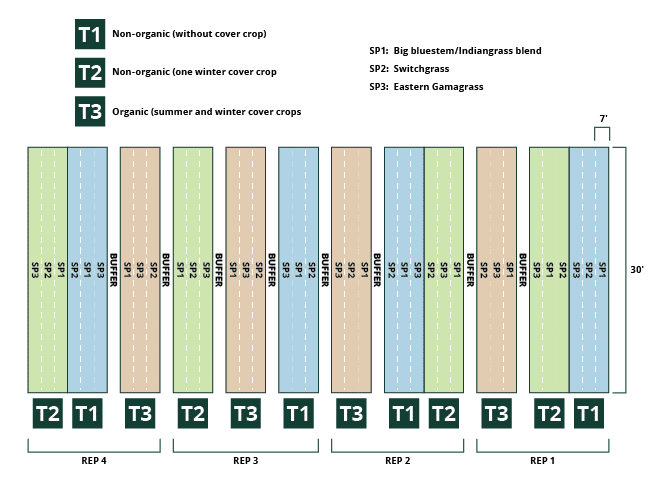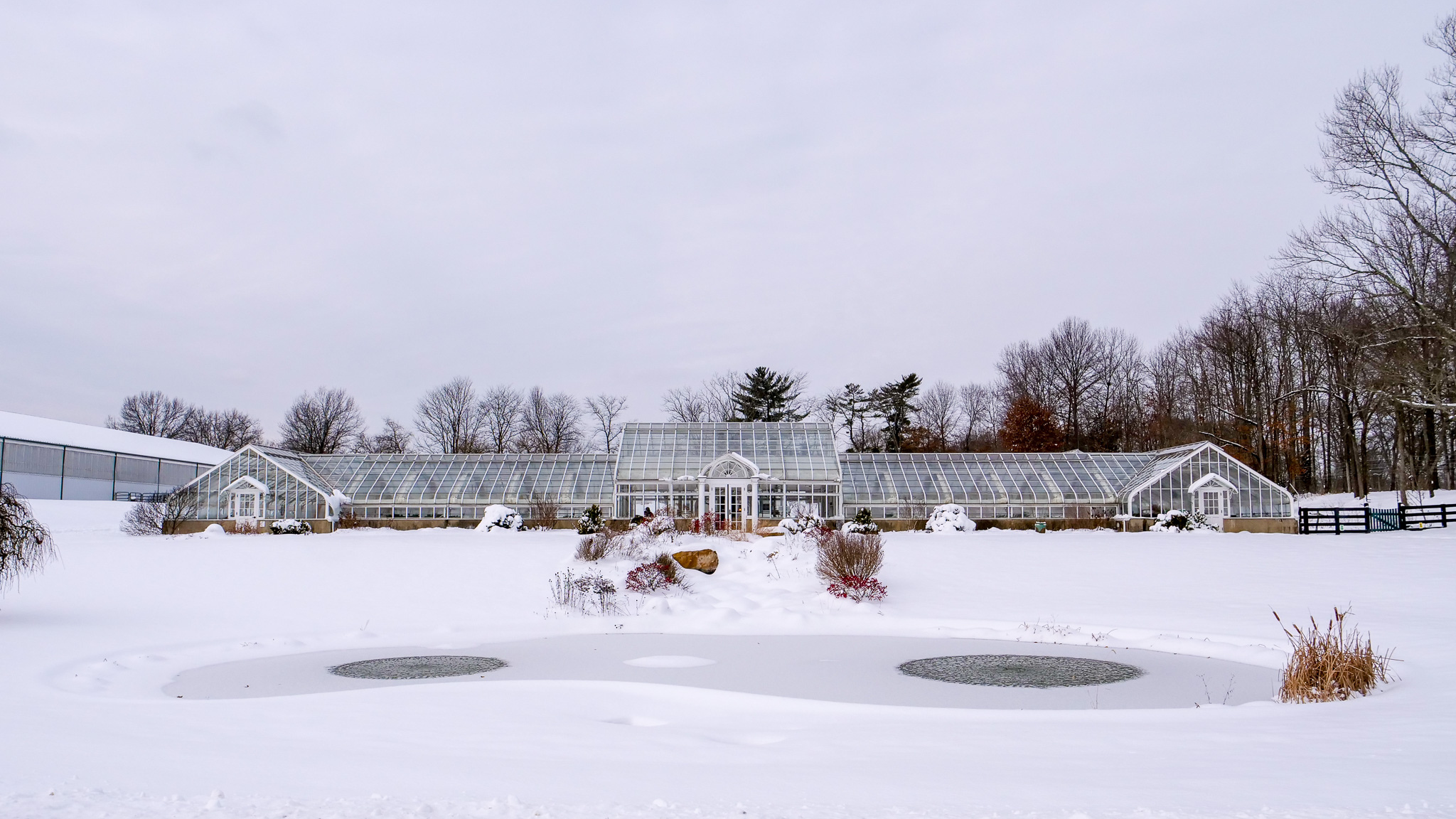Optimal Establishment Strategies
for Various Native Warm Season Grasses Species
Overview
Native warm-season grasses can provide valuable summer forage for livestock while cool-season grasses endure a decrease in productivity known as the “summer slump.” The most common native warm-season grasses used for forage are big bluestem, indiangrass, switchgrass, and eastern gamagrass. However, establishing native warm season grasses can be difficult, and no single establishment strategy works best for every species. Greenacres is collaborating with The Ohio State University to investigate optimal establishment strategies for various native warm season grass species. Ultimately, we should be able to identify which establishment strategy works best for each species (big bluestem/indiangrass, switchgrass, and eastern gamagrass).

Native Warm Season Grasses
Native warm-season grasses provide valuable summer forage for livestock and they also dominate the most endangered ecosystem in the United States—tallgrass prairie. Less than 4% of historical tallgrass prairie remains, and grassland birds and pollinators have suffered a precipitous decline as a result. As such, establishing native warm-season grasses represents a win-win for both livestock production and native wildlife.
Research Approach
Three establishment strategies, or treatments, are being employed to establish big bluestem/indiangrass, switchgrass, and eastern gamagrass plots:
-
-
- Herbicide application and no cover crops pre-planting
- Herbicide and a winter cover crop pre-planting
- No herbicide and two cover crops pre-planting.
-
Each species of grass is being established using each of the three treatments, and each combination is being repeated four times, resulting in total data collection from 36 plots. We collect data on bare ground/weed/native warm-season grass frequency every two weeks during the summer, and every year we collect data on forage quality. Treatments with the highest frequency of native warm-season grasses will be the most successful in terms of establishment. Greenacres is one of 4 locations in Ohio that are participating in this study.

Collaborators

Greenacres Foundation Research Department
Founded in 2015, the Research Department at Greenacres Foundation explores connections between agricultural practices and outcomes on soil health, food quality, and the environment. The data collected through our research efforts helps inform consumers and producers about healthier, more sustainable farming practices and allows us to make better management decisions. Learn more at https://green-acres.org/research/
The Ohio State University College of Food, Agricultural, and Environmental Sciences
The Ohio State University College of Food, Agricultural, and Environmental Sciences (CFAES) is one college spread across three campuses, with their faculty and staff split evenly among the three campuses. They have three mission areas, all dedicated to one essential purpose: They sustain life. more at https://cfaes.osu.edu/about
Researchers

Chad Bitler
Research Director, Greenacres Foundation
Chad leads the Greenacres Research Department with a goal to explore connections between regenerative agricultural practices, responsible ecological management, and their outcomes on soil health, food quality, and the environment – which are all inextricably linked. The data collected from Greenacres research is aimed at inspiring land managers to instill regenerative practices that can provide positive impacts on their land. Chad graduated from University of Cincinnati with a M.S. in Nutritional Sciences. He has collaborated on research with notable land grant universities and organizations to help increase the collective knowledge surrounding regenerative practices.

Dan Borrenpohl
Agriculture Research Specialist, Greenacres Foundation
Dan graduated with a M.S. in Agriculture from The Ohio State University in 2019 with a specialization in plant breeding and genetics, and his research focused on implementing genomic selection in early-stage field trials in the OSU wheat breeding program. Dan then graduated with a M.S. in Biological Systems Engineering from Washington State University in 2022 with a specialization in agricultural automation, and his research focused on developing machine vision systems for sweet cherry pruning robots. He now manages various research projects at Greenacres that range from evaluating composted biochar application in an integrated crop-livestock production to determining optimal strategies for establishing stands of native warm-season grass forage.

Marília Chiavegato
Assistant Professor, The Ohio State University
Dr. Marília Chiavegato started her academic career in Brazil, where she received an M.S. in Applied Chemistry, with a focus on agriculture and the environment, at the University of São Paulo. In 2014, she graduated with her PhD in Animal Science from Michigan State University. After returning to Brazil for a postdoctoral position at her alma mater, she began her current position as an Assistant Professor at The Ohio State University in the Department of Horticulture and Crop Science, with a joint appointment in the Department of Animal Science. An overarching theme of Dr. Chiavegato’s work is to improve the ecological sustainability of forage and grazing systems without sacrificing farm output. Through her systems-approach research, in which different aspects of an agricultural ecosystem are monitored, she aims to design effective land-management strategies. She has advised undergraduate, masters, and doctoral students and has a robust publication profile commensurate with her contributions to the field.
Research Updates
Contact Us
Department Director
Chad Bitler




